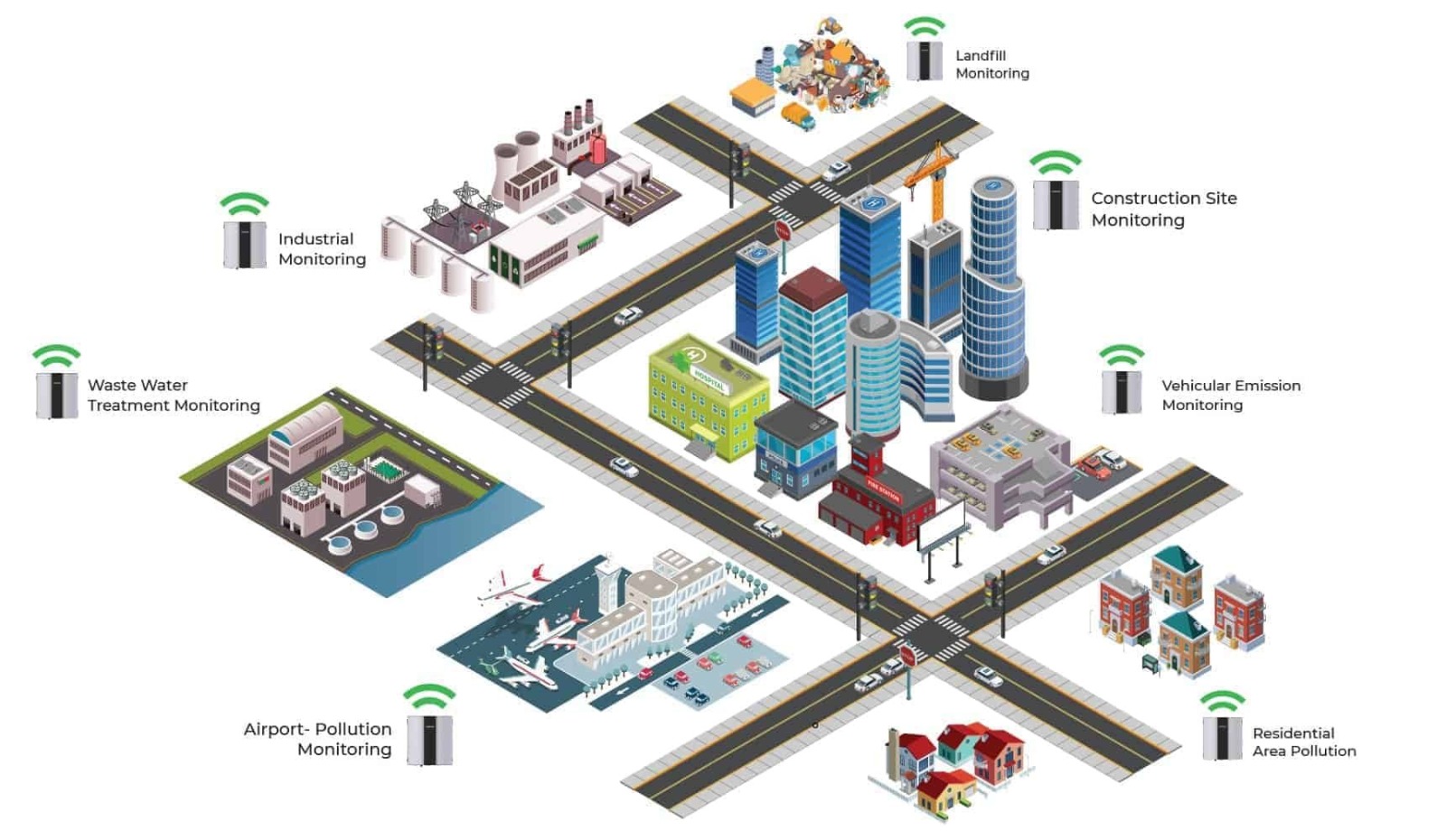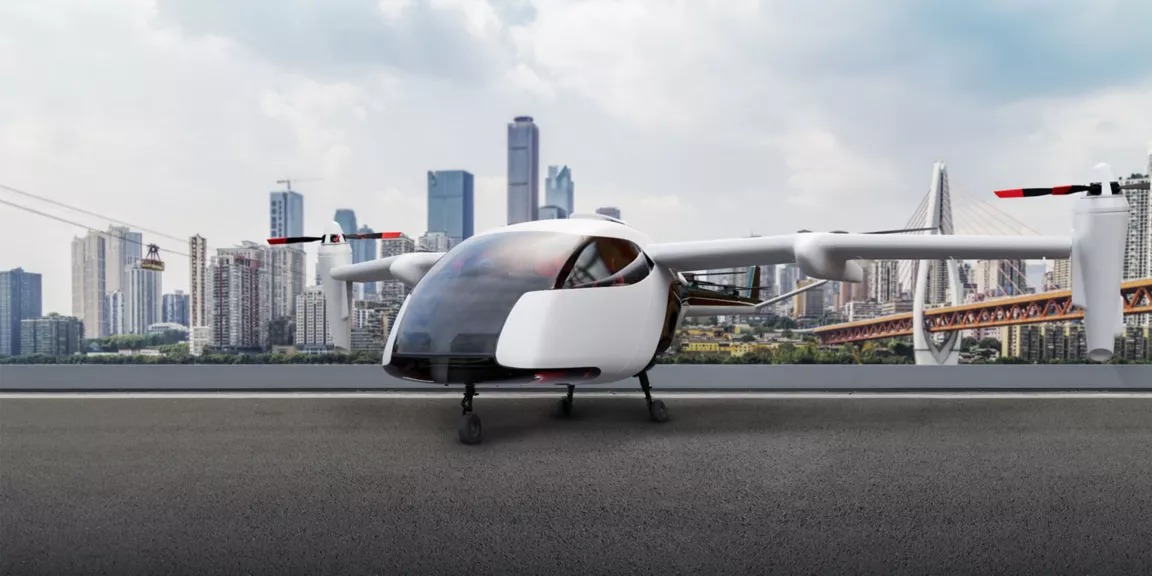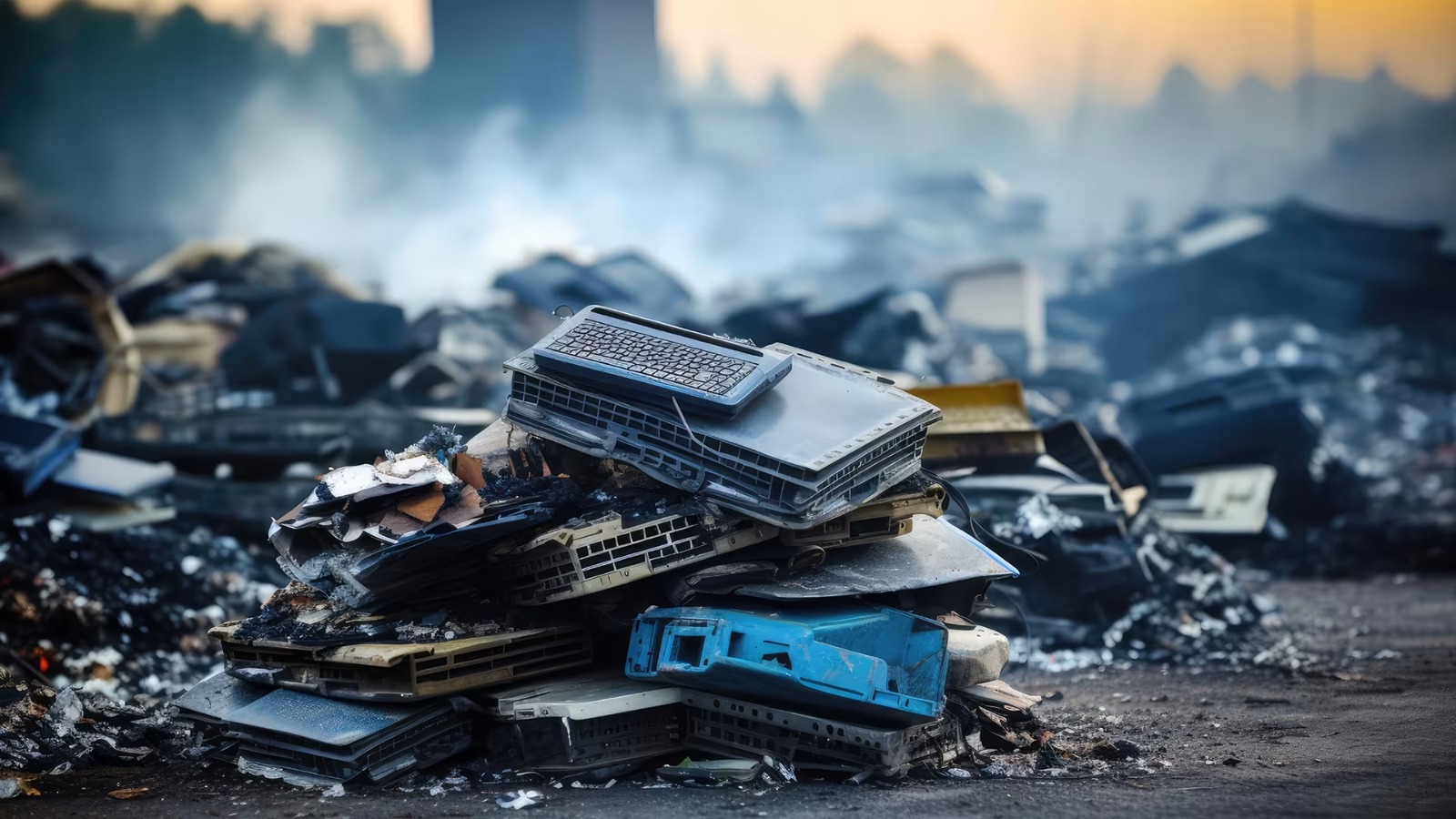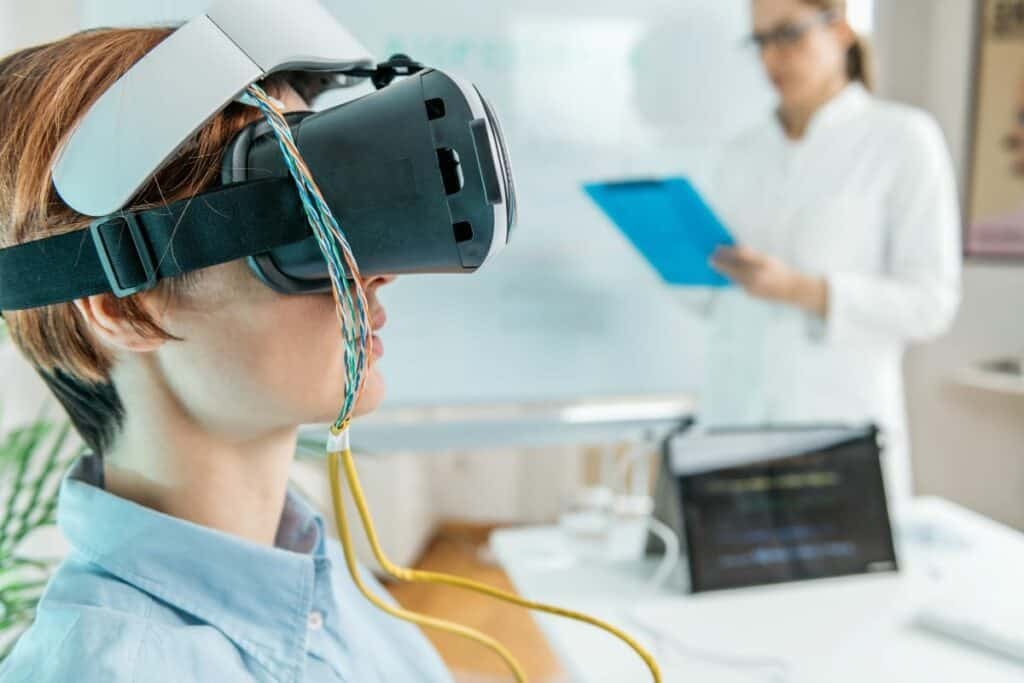
Sensors & tech for clean air in urban slums: low-cost monitoring, community data.
Urban slums face some of the world’s worst air pollution, yet traditional monitoring rarely reaches these communities. Emerging low-cost sensors, combined with community-driven data collection, are empowering residents to track, understand, and act on air quality threats. This technology-driven approach transforms invisible pollutants into actionable insights, promoting health, environmental justice, and sustainable urban change.
✨ Raghav Jain

Introduction: The Invisible Killer in Urban Slums
Air pollution is one of the world’s leading causes of premature deaths, claiming over seven million lives every year. Yet, its impact is not felt equally. In urban slums—home to over a billion people globally—the air people breathe is often filled with soot, smoke, and toxic gases from vehicles, garbage burning, and unregulated industries. These communities, already vulnerable due to limited healthcare and infrastructure, face compounded threats from poor air quality.
Traditional air monitoring systems—large, expensive, and centralized—rarely reach these marginalized regions. But a quiet technological revolution is changing that. Low-cost air quality sensors, mobile data platforms, and community-driven monitoring initiatives are empowering slum residents to collect their own environmental data, advocate for change, and build cleaner, healthier futures.
Section 1: The Urban Slum Air Crisis
1.1 Sources of Pollution
Urban slums are uniquely exposed to multiple sources of air pollution:
- Household Emissions: Many homes rely on biomass fuels like charcoal, kerosene, or firewood for cooking, releasing fine particulate matter (PM2.5).
- Open Waste Burning: Uncollected garbage often ends up in open fires, producing toxic compounds including dioxins and carbon monoxide.
- Traffic and Industrial Emissions: Slums situated near highways or factories face constant exposure to vehicle exhaust and industrial smog.
- Dust and Construction Debris: Poorly planned urban expansion and lack of green cover increase airborne dust particles.
1.2 Health Implications
Chronic exposure to polluted air causes respiratory diseases, cardiovascular issues, developmental disorders in children, and even cancer. Studies in cities like Delhi, Nairobi, and Lagos have shown that residents in informal settlements often experience PM2.5 levels two to three times higher than in nearby wealthier districts.
Yet, without reliable data, these risks remain invisible to policymakers. Traditional monitoring stations are too few, too costly, and too far away to capture the realities of these dense, dynamic neighborhoods.
Section 2: The Rise of Low-Cost Air Quality Sensors
2.1 What Are Low-Cost Sensors?
Low-cost sensors (LCS) are compact, affordable devices that can measure key pollutants like PM2.5, PM10, nitrogen dioxide (NO₂), carbon monoxide (CO), and ozone (O₃). Unlike large reference stations costing tens of thousands of dollars, LCS units can be built or purchased for under $200.
They typically use:
- Laser-based particle counters for particulate matter.
- Electrochemical sensors for gaseous pollutants.
- IoT modules (e.g., Wi-Fi, LoRa, GSM) for wireless data transmission.
2.2 Key Technologies
Several innovations have made LCS systems viable for slum deployment:
- Solar-Powered Sensors: Operate independently from unreliable grids.
- Rugged Enclosures: Designed to withstand heat, dust, and humidity.
- Edge Computing: Processes data locally before uploading to the cloud.
- Open-Source Platforms: Communities can access and visualize data in real time.
2.3 Examples of Global Low-Cost Sensor Initiatives
- Sensor.Community (formerly Luftdaten): A citizen-led global network providing DIY sensor blueprints and public data dashboards.
- OpenAQ: Aggregates open air quality data from around the world for analysis and advocacy.
- AirQo (Uganda): A project by Makerere University that deploys low-cost sensors in African cities, combining AI analytics with community engagement.
- India’s Clean Air Collective: Deploys low-cost sensors in informal settlements in Delhi and Mumbai, helping residents identify pollution hotspots.
These projects are redefining environmental monitoring by shifting it from top-down control to bottom-up participation.
Section 3: Community-Based Air Monitoring
3.1 The Power of Citizen Science
In slum areas, where formal data is absent, community involvement becomes essential. Citizen scientists—local volunteers trained to use portable monitors—collect data, interpret results, and raise awareness within their neighborhoods. This participatory approach bridges the gap between technology and trust.
3.2 Benefits of Community Data
- Empowerment: Locals understand and take ownership of their environmental challenges.
- Policy Leverage: Data collected by residents can pressure authorities to take action.
- Behavioral Change: Awareness encourages cleaner cooking practices, waste management, and advocacy for green spaces.
- Education: School projects involving air sensors inspire young people to engage with science and environmental stewardship.
3.3 Case Study: Dharavi, Mumbai
Dharavi, one of Asia’s largest slums, has piloted community-driven air monitoring projects using low-cost sensors developed by NGOs like SensorFlow India and Urban Emissions. The results revealed high levels of particulate matter during morning and evening cooking hours.
This data helped initiate small-scale interventions like promoting LPG adoption, reducing waste burning, and advocating for better municipal waste services.
Section 4: Data Platforms and Digital Tools
4.1 Cloud-Connected Monitoring
Modern low-cost sensors upload readings in real time to cloud-based dashboards. Using mobile apps or web platforms, anyone can view pollution levels, compare time trends, or map hotspots.
Some platforms even include AI-powered analytics, offering predictive insights. For example, if pollution spikes correlate with certain traffic patterns or weather conditions, communities can plan accordingly.
4.2 Open Data for Transparency
Open-access databases such as OpenAQ and World Air Quality Index democratize data. When citizens in slums can visualize pollution levels around their homes, it transforms invisible air into a visible problem—a crucial first step toward accountability.
4.3 The Role of Big Data and AI
AI algorithms are now being used to fill data gaps where sensors are sparse. By integrating satellite imagery, meteorological data, and on-ground sensor readings, models can estimate pollution exposure with remarkable accuracy. This combination of ground truth and computational intelligence ensures that even low-cost systems can deliver scientifically robust insights.
Section 5: Policy and Public Health Integration
5.1 Informing Urban Planning
Data from low-cost sensors helps city authorities identify pollution hotspots and prioritize interventions—like rerouting traffic, installing air purifiers in schools, or creating “clean air corridors.”
5.2 Health Surveillance
Health clinics in slums can correlate respiratory illness records with air quality data. This integration enables preventive public health strategies, such as alert systems for vulnerable populations during high-pollution days.
5.3 Collaborative Governance
Partnerships between municipalities, NGOs, and communities ensure that local data is not only collected but acted upon. For example, Delhi’s Citizen Air Initiative involved both residents and the Delhi Pollution Control Committee in data validation and policy advocacy.
Section 6: Challenges and Future Directions
6.1 Calibration and Accuracy
Low-cost sensors are less precise than reference-grade equipment. Their readings can drift due to humidity, temperature, or sensor aging. Solutions include:
- Regular calibration with reference stations.
- Machine learning correction algorithms.
- Cluster averaging to reduce error through distributed sensing.
6.2 Data Sustainability
Projects often fade after pilot stages due to lack of funding. To sustain them:
- Governments can subsidize maintenance.
- NGOs can train local “air stewards” for upkeep.
- Corporate CSR funds can support community sensors as part of environmental initiatives.
6.3 Social and Ethical Considerations
Ownership of data is critical. Communities must retain control over how their data is used. Ethical data practices ensure transparency, prevent misuse, and build long-term trust.
6.4 The Future: From Data to Action
Emerging trends suggest integration with smart city systems. Imagine a network where real-time slum air data automatically adjusts traffic lights, triggers public warnings, or informs emergency medical services.
Low-cost does not mean low impact—it means distributed intelligence at the grassroots level.
Section 7: Case Studies Around the World
7.1 Nairobi, Kenya
The AirQo network has placed over 100 low-cost sensors in informal settlements, providing the first citywide pollution map. The data led to community clean-up drives and influenced national air quality standards.
7.2 Jakarta, Indonesia
Local NGOs worked with residents of densely packed districts to install sensors on rooftops. The open data dashboard attracted media attention, prompting the city government to restrict open waste burning.
7.3 Delhi, India
Projects like Smogathon Delhi and Project SensorShaala placed low-cost monitors in schools near slum clusters. The data revealed alarming exposure levels for children, leading to mask distribution campaigns and awareness programs.
Section 8: Toward Environmental Justice
Clean air is not a privilege—it is a fundamental human right. Low-cost monitoring technology transforms the struggle for clean air into an issue of justice and inclusion.
For decades, pollution in slums remained unmeasured, and therefore, unaddressed. With affordable sensors and community-driven data collection, these invisible injustices are finally coming to light.
When communities own their data, they gain a voice in environmental decision-making. They can challenge narratives, demand cleaner technologies, and hold industries accountable. In essence, low-cost air sensors are not just tools—they are instruments of social empowerment.
Air pollution has become one of the most pressing public health crises of the 21st century, disproportionately affecting vulnerable populations, particularly those living in urban slums where dense populations, lack of infrastructure, and limited regulatory oversight create perfect conditions for toxic air accumulation, and yet, despite the severity of this problem, these communities have historically been excluded from formal air quality monitoring programs, leaving millions exposed to hazardous pollutants like particulate matter (PM2.5 and PM10), nitrogen dioxide, carbon monoxide, sulfur dioxide, and volatile organic compounds on a daily basis, with the long-term consequences manifesting as chronic respiratory diseases, cardiovascular disorders, developmental impairments in children, and even premature death, which is particularly alarming given that slum populations often lack access to adequate healthcare facilities, clean cooking fuels, or protective infrastructure; in recent years, however, technological advancements have begun to shift this paradigm, especially through the emergence of low-cost air quality sensors, which are compact, affordable, and capable of capturing real-time environmental data with sufficient accuracy to inform both local communities and broader urban management strategies, with these devices employing laser-based particle counters for particulate matter, electrochemical sensors for gaseous pollutants, and IoT-enabled modules for data transmission, allowing residents to visualize pollution levels in their neighborhoods via cloud-connected dashboards or mobile applications, thereby transforming previously invisible environmental threats into tangible, actionable information; one of the key advantages of these low-cost sensors is their accessibility, with many models available for under $200, far lower than the tens of thousands of dollars required for traditional reference-grade stations, and their adaptability, as they can be powered by solar panels, encased in weatherproof enclosures suitable for harsh urban conditions, and integrated with edge computing to process data locally before sending it to centralized systems, making them ideal for deployment in slums where electricity supply may be intermittent and environmental conditions harsh; beyond the technical aspects, the social dimension of this technological shift is equally important, as community-driven air monitoring programs leverage citizen science to empower residents to collect, interpret, and act upon environmental data, creating a sense of ownership and agency that is critical in areas historically marginalized from policy discussions, with successful initiatives around the world, including Sensor.Community, OpenAQ, AirQo in Uganda, and India’s Clean Air Collective, demonstrating the impact of participatory monitoring by providing open-source designs, data visualization platforms, and educational resources that enable residents to identify pollution hotspots, correlate exposure with health outcomes, and advocate for interventions such as clean cooking technologies, improved waste management, and regulation of industrial emissions; in densely populated settlements like Dharavi in Mumbai, community-led sensor deployments have revealed specific patterns of pollution spikes related to cooking times, waste burning, and local traffic congestion, leading to targeted behavioral changes, awareness campaigns, and pressure on municipal authorities to address systemic issues, while in Nairobi, AirQo’s network of sensors has produced the first citywide pollution maps, informing government strategies and community initiatives, and in Jakarta, sensor deployment on rooftops of informal settlements has resulted in policy measures to restrict open waste burning, illustrating how localized data collection can translate into tangible environmental action; the integration of cloud-based platforms and artificial intelligence further amplifies the utility of these sensors, enabling real-time monitoring, predictive analytics, and visualization of air quality trends, while big data integration allows researchers and policymakers to combine sensor readings with satellite imagery, meteorological data, and traffic patterns to estimate exposure even in areas with sparse monitoring coverage, thereby addressing one of the key limitations of low-cost sensors, which is variability in accuracy due to environmental factors like temperature, humidity, or sensor drift, issues that can be mitigated through calibration with reference-grade stations, machine learning correction algorithms, and network averaging of multiple sensor readings to enhance reliability; the implications for public health and urban governance are profound, as sensor networks can inform early-warning systems for vulnerable populations, guide urban planning decisions such as traffic rerouting and green corridor creation, and provide data-driven evidence for clean air policies, while also fostering educational initiatives that involve schools and youth groups, teaching scientific literacy, environmental stewardship, and advocacy skills, thereby building capacity within the community for sustained engagement; however, challenges remain, including ensuring long-term funding and maintenance for sensor networks, addressing ethical concerns regarding data ownership and privacy, and integrating community-collected data with official regulatory frameworks in a meaningful way, as well as scaling pilot projects to reach the vast number of informal settlements worldwide, all of which require multi-sector collaboration involving local governments, NGOs, universities, and private stakeholders to create sustainable, impactful systems; looking ahead, the future of clean air technology in urban slums lies in the development of distributed, community-centered “smart air ecosystems” where sensors, AI analytics, mobile platforms, and citizen engagement converge to provide continuous monitoring, predictive insights, and actionable recommendations, enabling residents to take informed steps to reduce exposure, advocate for systemic change, and hold polluters accountable, while governments can prioritize interventions based on accurate, hyper-local data rather than generalized assumptions, and urban planners can integrate environmental justice considerations into infrastructure development, thus ensuring that the right to clean air is extended to all citizens regardless of socioeconomic status; ultimately, low-cost sensors and community-driven monitoring do more than measure pollutants—they transform air quality from an invisible threat into a visible, actionable problem, empower marginalized populations to participate in environmental decision-making, and provide the foundation for more equitable urban governance, illustrating how innovation, technology, and social engagement can converge to address one of the most pressing global health challenges of our time, while creating a blueprint for inclusive, data-driven environmental justice that can be replicated across cities worldwide.
Air pollution is a silent but deadly crisis in urban slums, where dense populations, inadequate infrastructure, and lack of regulation combine to expose millions of residents to dangerously high levels of particulate matter, nitrogen dioxide, carbon monoxide, and other toxic compounds, yet despite this extreme vulnerability, formal air monitoring systems rarely reach these communities because traditional monitoring stations are expensive, centralized, and difficult to maintain, leaving residents unaware of the specific threats in their immediate environment, which contributes to chronic respiratory illnesses, cardiovascular diseases, developmental issues in children, and premature deaths that disproportionately affect those already living in poverty, and this gap has created an urgent need for innovative solutions, one of which is the development and deployment of low-cost air quality sensors, compact devices capable of measuring fine particulate matter (PM2.5 and PM10), nitrogen dioxide, ozone, and carbon monoxide with sufficient accuracy to inform actionable decisions, often costing a fraction of the price of traditional reference-grade monitoring equipment, sometimes under $200, and equipped with laser-based particle counters, electrochemical sensors, and IoT-enabled modules for wireless data transmission, which can be powered by solar panels or other off-grid solutions to function in areas with unreliable electricity, housed in rugged enclosures to withstand dust, heat, and humidity, and in many cases integrated with edge computing and cloud platforms that allow real-time processing and visualization of data for residents, NGOs, and city authorities, enabling the transformation of invisible air pollutants into tangible information that can guide behavior, policy, and advocacy, and when combined with citizen science initiatives, these technologies empower communities to take control of their environmental health by learning how to operate sensors, interpret data, identify pollution hotspots, and communicate findings to policymakers and media, which not only raises awareness but also fosters accountability and catalyzes interventions such as the adoption of clean cooking fuels, better waste management practices, and targeted regulatory actions, as exemplified by successful global initiatives including Sensor.Community, OpenAQ, AirQo in Uganda, and India’s Clean Air Collective, where community members have deployed sensors in informal settlements to gather data that was previously unavailable, revealing patterns of exposure linked to household cooking times, open burning of waste, vehicular traffic, and nearby industrial activities, and enabling localized interventions like providing LPG stoves, advocating for municipal waste services, implementing school-based awareness campaigns, and influencing urban planning decisions, while also opening opportunities for educational engagement, where schools and youth programs utilize sensors to teach scientific literacy, environmental stewardship, and advocacy skills, cultivating a generation that understands both the technological and social aspects of clean air management, and the integration of sensors with cloud-connected dashboards, mobile applications, and artificial intelligence further enhances the utility of these systems, as AI and big data allow predictive modeling, filling gaps where sensors are sparse, correlating pollution levels with weather patterns and traffic flows, and providing actionable insights to both residents and authorities, which addresses the key limitation of low-cost sensors, namely variability and drift in measurements caused by environmental factors, by enabling machine learning corrections, calibration with reference stations, and data averaging across multiple sensors, thus maintaining reliability and confidence in the results, and this combination of low-cost hardware, digital platforms, and community participation represents a shift toward inclusive environmental monitoring where the people most affected by pollution can participate directly in measuring and improving air quality, creating a feedback loop between data collection, awareness, and advocacy, which has been demonstrated in cities such as Dharavi in Mumbai, where sensor data revealed high PM2.5 levels during peak cooking hours and prompted campaigns for cleaner cooking fuels, in Nairobi, where AirQo’s network mapped pollution across informal settlements and informed municipal strategies, and in Jakarta, where rooftop sensors installed by local NGOs helped enforce restrictions on open burning, illustrating that even small-scale, community-driven monitoring projects can influence policy and health outcomes, and while challenges remain—including ensuring long-term sustainability, maintaining sensor calibration, addressing ethical concerns about data ownership, and scaling programs to reach the millions living in slums globally—strategic partnerships between governments, NGOs, universities, and private sector actors can help overcome these barriers, with funding models including municipal budgets, corporate social responsibility programs, and community-driven maintenance ensuring continuity, while transparent, open-access platforms protect privacy, promote accountability, and enable replication across regions, ultimately demonstrating that low-cost sensors are more than just monitoring tools: they are instruments of empowerment, environmental justice, and public health improvement, providing residents with the knowledge and resources to understand their environment, demand accountability, and implement practical solutions, bridging the long-standing gap between marginalized communities and urban environmental governance, and looking ahead, the future of this approach lies in integrating sensor networks with smart city infrastructure, predictive analytics, AI-driven alerts, and real-time public communication systems, creating a distributed, community-centered ecosystem that continuously monitors air quality, predicts pollution events, and facilitates rapid intervention, ensuring that no one is left behind in the fight for clean air, as these innovations demonstrate that technology, when combined with social engagement and participatory science, can transform urban slums from neglected zones of pollution into empowered communities capable of protecting their own health and influencing broader environmental policy, establishing a new paradigm for environmental equity where access to clean air becomes a fundamental right rather than a privilege dictated by geography or socioeconomic status, and in this context, every rooftop sensor, mobile dashboard, and informed citizen becomes part of a collective effort to turn invisible environmental threats into visible, actionable knowledge, demonstrating that low-cost, community-driven monitoring is not just a technological solution but a powerful tool for social change, creating tangible pathways toward healthier, safer, and more equitable urban living conditions worldwide.
Conclusion
The deployment of low-cost air sensors and community-based data systems is revolutionizing how we approach clean air in urban slums. These technologies bridge the gap between scientific precision and social participation.
By making data accessible, communities can identify local pollution sources, pressure policymakers, and promote behavioral changes. Projects in Asia and Africa demonstrate that even limited resources can yield transformative outcomes when combined with innovation and local engagement.
However, sustainability, data accuracy, and ethical governance remain challenges that require multi-sector collaboration. The future lies in scaling these efforts, integrating them into national air quality networks, and ensuring that no one—regardless of where they live—breathes unsafe air.
Q&A Section
Q1 :- What are low-cost air quality sensors?
Ans:- Low-cost air sensors are small, affordable devices that measure pollutants like PM2.5, PM10, CO, NO₂, and ozone. They use technologies like laser particle counters and electrochemical sensors and can transmit real-time data wirelessly.
Q2 :- Why are these sensors important in urban slums?
Ans:- Traditional air monitoring systems are too costly and scarce to cover informal settlements. Low-cost sensors make air quality monitoring accessible to these underserved communities, allowing them to identify local pollution sources and advocate for cleaner environments.
Q3 :- How do communities use the data collected?
Ans:- Community members use the data to raise awareness, demand government action, modify behaviors (like reducing waste burning), and collaborate with NGOs for health and environmental programs.
Q4 :- What challenges exist with low-cost sensors?
Ans:- Challenges include calibration accuracy, data maintenance, long-term funding, and ensuring ethical use of data. Regular sensor calibration and machine-learning corrections can improve reliability.
Q5 :- How can technology ensure clean air for all?
Ans:- Through integration of sensor data with AI, IoT, and public policy systems, cities can predict pollution events, warn residents in real time, and enforce better urban planning measures—making clean air achievable even in the poorest neighborhoods.
Similar Articles
Find more relatable content in similar Articles

The Future of Electric Planes ..
The aviation industry is under.. Read More

E-Waste Crisis: The Race to Bu..
The rapid growth of electronic.. Read More

3D-Printed Organs: Are We Clos..
3D-printed organs are at the f.. Read More

Virtual Reality Therapy: Heali..
Virtual Reality Therapy (VRT) .. Read More
Explore Other Categories
Explore many different categories of articles ranging from Gadgets to Security
Smart Devices, Gear & Innovations
Discover in-depth reviews, hands-on experiences, and expert insights on the newest gadgets—from smartphones to smartwatches, headphones, wearables, and everything in between. Stay ahead with the latest in tech gear
Apps That Power Your World
Explore essential mobile and desktop applications across all platforms. From productivity boosters to creative tools, we cover updates, recommendations, and how-tos to make your digital life easier and more efficient.
Tomorrow's Technology, Today's Insights
Dive into the world of emerging technologies, AI breakthroughs, space tech, robotics, and innovations shaping the future. Stay informed on what's next in the evolution of science and technology.
Protecting You in a Digital Age
Learn how to secure your data, protect your privacy, and understand the latest in online threats. We break down complex cybersecurity topics into practical advice for everyday users and professionals alike.
© 2025 Copyrights by rTechnology. All Rights Reserved.